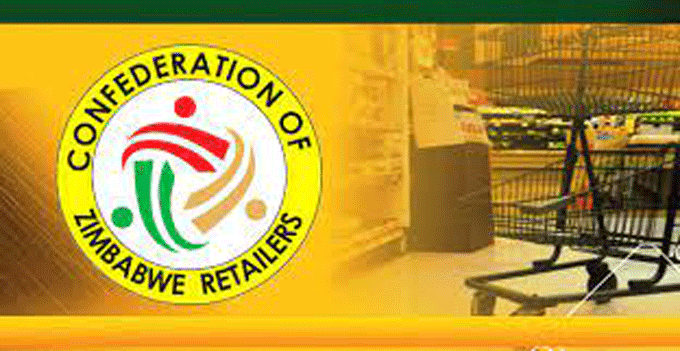
BY CONFEDERATION OF ZIMBABWE RETAILERS
WHILE government was bullish in the mid-term fiscal policy and revised upwards gross domestic product (GDP) growth projections for 2021 from 7,4% initially projected in November last year to 7,8%, growth projections for the wholesale and retail trade sectors were slashed downwards from 5,7% to 5,1%.
This downward revision is a reflection of how the retail sector was significantly affected by national lockdown measures imposed during the first half as well as other factors.
Going forward, if no concrete measures are taken to support the retail sector, there will be a further decline which will also imply job losses and low overall economic growth as the retail sector also contributes significantly to GDP.
It is our firm belief that there should be targeted measures that support the retail sector at policy level, as opposed to a blanket approach.
While the mid term fiscal policy spoke of “tax reforms which cushion employees,” the very policy left nontaxable personal income tax at a very lower threshold of $10 000 and below, which means that virtually all employees are taxed, including low income earners whose disposable incomes are already very low.
While the confederation had proposed that the non-taxable threshold be lifted to about $50 000, Treasury has maintained it at $10 000, which in our view is not pro-poor and will continue to suffocate domestic demand, especially for low income earners who have a higher marginal propensity to consume.
The biggest challenge with the current non-taxable personal income threshold is that government will be taking more from shoppers who will have a lot less money in their pockets.
- Chamisa under fire over US$120K donation
- Mavhunga puts DeMbare into Chibuku quarterfinals
- Pension funds bet on Cabora Bassa oilfields
- Councils defy govt fire tender directive
Keep Reading
While we understand that personal income tax is the third biggest contributor to total tax revenue, contributing 17%, and that government is trying to maximise its revenue collection, it is our view that the low income employee, who is also the consumer is already overtaxed as they also have to pay additional taxes such as the 2% intermediated money transfer tax, among others.
We strongly recommend that the non-taxable personal income tax threshold be at least linked to the poverty datum line, as measured by the total consumption poverty line, which stood at $36 756 for a family of six in July 2021.
Otherwise, taxing personal incomes of those already deemed to be poor will be simply be worsening their poverty and weakening domestic demand.
From our own survey, Zimbabwe has the lowest threshold of non-taxable personal income tax in the region.
During the first five months of the year, Zimbabwe reported an increase in its trade deficit to US$416 million, compared to US$340 million recorded during the same period in the prior year.
While the country’s exports surged 31% to US$2,02 billion between January and May 2021, compared to US$1,53 billion during the same period in the prior year; imports also increased by 30% to US$2,43 billion.
Given how circa 60% of the country’s exports are concentrated to just two countries, South Africa and United Arab Emirates, it is the confederation’s view that more efforts should be put on diversifying exports to reduce risks of external shocks, such as the recent disturbances and looting which were experienced in South Africa in July 2021.
It is also our strong view that the country’s top 10 exports should be value added products, as opposed to the current scenario where all the top five exports are raw materials, which we do not fully benefit from their export as they are simply commodities that have not been value added.
This is also in line with the National Trade Policy, which is targeting to increase the contribution of manufactured exports to total exports from 15% in 2018 to 30% in 2023.
Zimbabwe’s annual inflation rate for the month of July 2021 slowed down to 56%, from a high figure of 362,63% recorded in January this year.
It is also our view that the weak demand contributed, to some extent to the reduction in inflation, although we also applaud the different inflation targeting measures deployed by government.
While the authorities are targeting an inflation rate of 25%, our view is that the figure is still high, as inflation should be understood in terms of a moving vehicle; although it would have decelerated, it would still be going forward at that reduced speed, but affecting consumers especially in this low income environment that we are operating in.
In light of the above, the confederation urges authorities to be pragmatic in taming inflation while also reconciling that with measures to lift spending power upwards and ensure policy consistency on measures that support price stability, as opposed to legal instruments such as SI 127 whose effects resulted in inflationary pressures bottling up.
Further, we note with concern how inflation rates for certain individual basic commodities and services are still very high and actually way above the headline annual inflation rate of 56,37% for the month of July.
Examples include meat, whose annual inflation was 63,42% in July 2021.
The prices of meat were forced upwards by outbreaks of tick-borne diseases which resulted in many cattle deaths across the country.
Zimbabwe also received too much rainfall this year, with some areas actually flooding, and that also caused an outbreak of other livestock diseases which resulted in fatalities. That affected the prices of beef.
In the poultry industry, shortages of day old chicks also resulted in their prices going up significantly, also putting pressure on chicken prices.
The price of feed also nearly doubled, compared to three years ago, which further disincentives poultry farmers and again puts pressure on chicken prices.
It is hoped that in the second half of the year, feed prices will relatively decrease as the bumper harvest realised this year kicks in.
The inflation rate for milk, cheese and eggs was also high at 64,78% in July, owing to same reasons alluded to above.
Also on the high note was the inflation rate for fruits 81,53% and vegetables 63,25%.
Medical aid contribution inflation also stood at 167,54% and car insurance 136,76%.
The inflation rate for electricity is still very high at 208,79%, and given that it is a basic necessity, especially for urban dwellers, and businesses, the high prices for electricity still pose a challenge to their welfare.
Gas inflation also stood at 55,34% in July.
University fees recorded a very high inflation rate of 353,92%.
Restaurants and cafes recorded a relatively high inflation of 87,32%, largely due to them operating at low capacity, which somehow forces them to charge relatively higher costs in order to recoup their fixed and variable costs.
Animal drawn vehicles also recorded a relatively higher inflation of 59,42%.
However, some individual products actually recorded inflation rates which were much lower than the headline rate.
During the first half of the year, most retail players have seen their wages and salaries jumping out of the recommended below 3% of total revenue to the current 7% to 10% of total revenue, largely due to the shrinking topline against a constant wage bill.
It is also our hope that there will be consistency in government’s policies as we are already in an uncertain environment marked by differing coronavirus variants and lockdowns occurring in different parts of the world.










